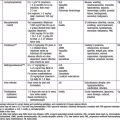Chapter 574 Pheochromocytoma
Pheochromocytomas are also associated with tuberous sclerosis, Sturge-Weber syndrome, and ataxia-telangiectasia. Somatic mutations of the genes mentioned above, particularly VHL, have been found in some sporadic cases of pheochromocytoma (Chapter 589).
Laboratory Findings
Pheochromocytomas produce norepinephrine and epinephrine. Normally, norepinephrine in plasma is derived from both the adrenal gland and adrenergic nerve endings, whereas epinephrine is derived primarily from the adrenal gland. In contrast to adults with pheochromocytoma in whom both norepinephrine and epinephrine are elevated, children with pheochromocytoma predominantly excrete norepinephrine. Total urinary catecholamine excretion usually exceeds 300 µg/24 hr. Urinary excretion of metanephrines (particularly normetanephrine) are also increased (see Fig. 568-2). Daily urinary excretion of these compounds by unaffected children increases with age. Although urinary excretion of vanillylmandelic acid (VMA, 3-methoxy-4-hydroxymandelic acid), the major metabolite of epinephrine and norepinephrine, is increased, vanilla-containing foods and fruits can produce falsely elevated levels of this compound, which therefore is no longer routinely measured.
Differential Diagnosis
Various causes of hypertension in children must be considered, such as renal or renovascular disease; coarctation of the aorta; hyperthyroidism; Cushing syndrome; deficiencies of 11β-hydroxylase, 17α-hydroxylase, or 11β-hydroxysteroid dehydrogenase (type 2 isozyme); primary aldosteronism; adrenocortical tumors; and essential hypertension (Chapter 439). A nonfunctioning kidney may result from compression of a ureter or of a renal artery by a pheochromocytoma. Paroxysmal hypertension may be associated with porphyria or familial dysautonomia. Cerebral disorders, diabetes insipidus, diabetes mellitus, and hyperthyroidism must also be considered in the differential diagnosis. Hypertension in patients with neurofibromatosis may be caused by renal vascular involvement or by concurrent pheochromocytoma.
Gottlieb E, Tomlinson IP. Mitochondrial tumour suppressors: a genetic and biochemical update. Nat Rev Cancer. 2005;5:857-866.
Guller U, Turek J, Eubanks S, et al. Detecting pheochromocytoma: defining the most sensitive test. Ann Surg. 2006;243:102-107.
Hering A, Guratowska M, Bucsky P, et al. Characteristic genomic imbalances in pediatric pheochromocytoma. Genes Chromosomes Cancer. 2006;45:602-607.
Maher ER, Eng C. The pressure rises: update on the genetics of phaeochromocytoma. Hum Mol Genet. 2002;11:2347-2354.
Reddy VS, O’Neill JAJr, Holcomb GWIII, et al. Twenty-five-year surgical experience with pheochromocytoma in children. Am Surg. 2000;66:1085-1091.
Ross JH. Pheochromocytoma. Special considerations in children. Urol Clin North Am. 2000;27:393-402.
Weise M, Merke DP, Pacak K, et al. Utility of plasma free metanephrines for detecting childhood pheochromocytoma. J Clin Endocrinol Metab. 2002;87:1955-1960.
Yip L, Lee JE, Shapiro SE, et al. Surgical management of hereditary pheochromocytoma. J Am Coll Surg. 2004;198:525-534.




